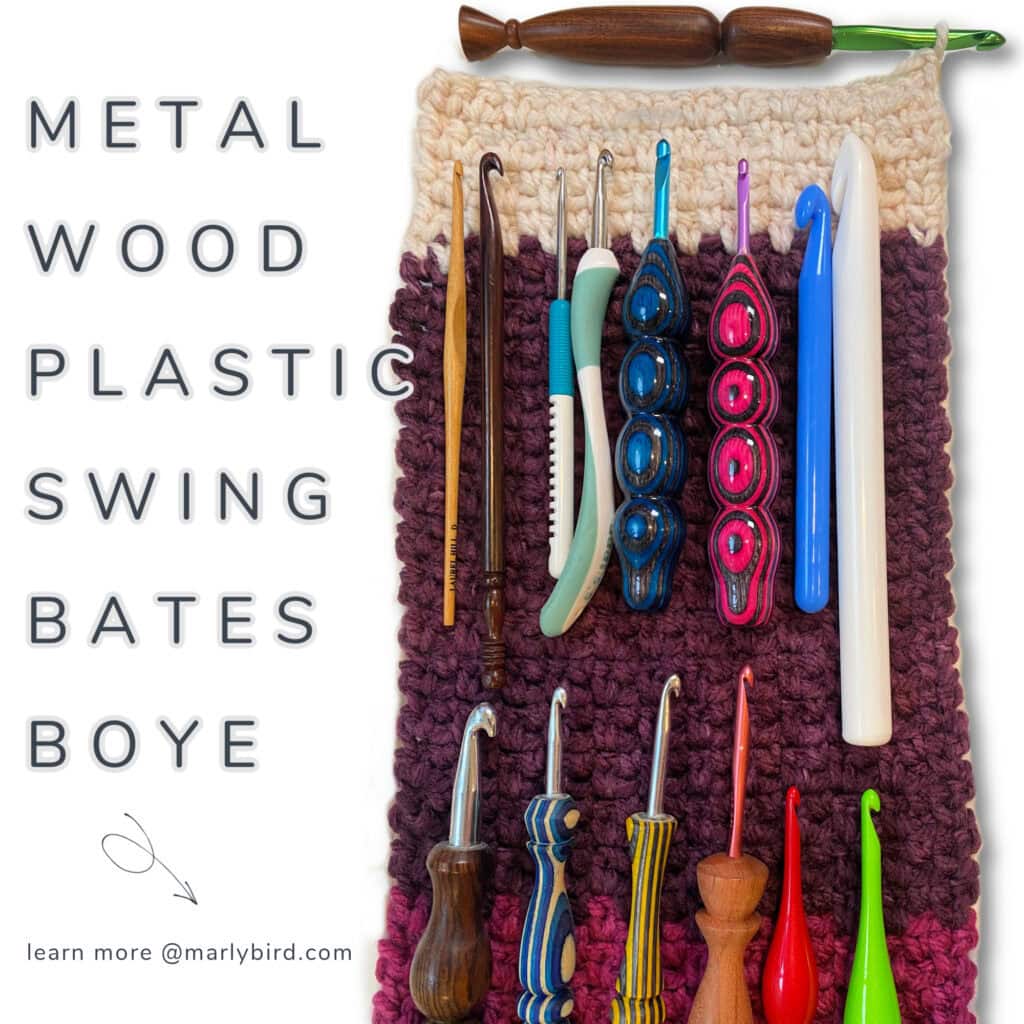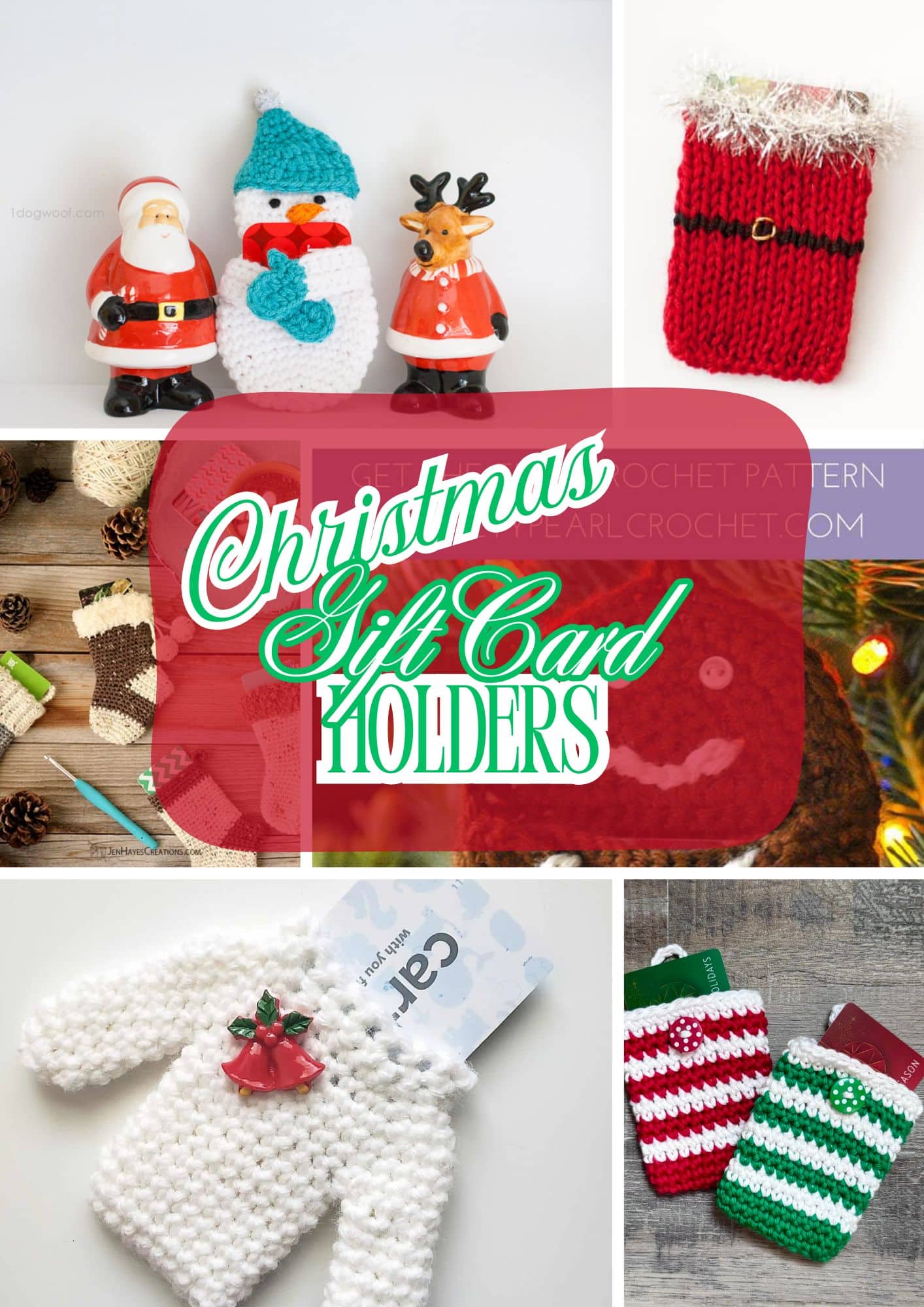Ultimate Beginners Guide to Crochet Hooks
We’re about to kick off BiCrafty Bootcamp: Beginner Crochet Lessons for Knitters. Sign up now (it’s free the sign up makes sure we know where to send you updates.) Lessons begin on September 1st. However, we wanted to get you prepped now by giving you a beginners guide to crochet hooks. That way you’re all set to go with our first set of lessons!
Disclosure: Affiliate links included. Click on them and make a purchase and I get a percentage of sales. Your price stays the same. I appreciate all of the support!

Your Basic Guide to Crochet Hooks
When you first begin to knit, there’s a lot that you need to learn about knitting needles. Luckily, crochet hooks aren’t quite as complicated. Whereas knitting needles have straights, and circulars, and DPNs, in crochet a hook is pretty much just a hook. There are a few things you’ll want to learn, though, as you begin to learn to crochet basics.
In our First BiCrafty Bootcamp Crochet Edition Video, we show you all different kinds of brands and give you some thoughts on them. You can watch that here.
Crochet Hook Sizes
Like knitting needles, hooks are sized by mm. Bigger mm gives you bigger loops. Typically, with heavier yarn, you’ll use larger size crochet hooks.
Whereas knitting needles have a number + mm (for example, size 8 – 5 mm needles), crochet hooks have a letter + # + mm (for example, size I9 – 5 mm). But the gist is the same. As a knitter, you already know about gauge and tension. For example, you know that if you’re knitting too tight for gauge, then you might need to go up a knitting needle size. It’s the exact same thing in crochet. That’s why it’s good to order a set of crochet hooks rather than just buying one to start.
You can learn all about crochet hook sizes and the recommended yarn weights for them from our handy crochet hook size chart. It’s an excellent supplement to the rest of this guide to crochet hooks.
Crochet Hook Anatomy

There are five basic parts to a crochet hook. The top of the hook is called the point. Then you have the “throat”. After that comes the shaft. There’s a thumb rest, followed by the rest of the handle.
There are basically two different types of crochet hooks in terms of anatomy:inline and tapered. Inline hooks are so-named because the hook point is “in line” with the shaft. Therefore the space between the hook and shaft is deeper than with tapered hooks. The point is pointier than with tapered hooks. The name comes from the fact that the hook tapers down to a thinner throat. This creates a shallower gap between hook and throat. The point is rounder.
Many people refer to the two most common brand names of crochet hooks to described the difference between hooks: Susan Bates crochet hooks are inline whereas Boye hooks are tapered. Neither is necessarily better than the other, even for beginners. It’s just a matter of figuring out what you like. For example, you’ve probably knit with some needles that are pointier and others more blunt; it’s a matter of practice to figure out which is right for you.
Crochet Hook Materials

Your knitting knowledge will serve you well here as you consider which type of crochet hook material you want to choose. Just like with knitting needles, crochet hooks come in metal (aluminum as well as steel, the latter usually only used for thread crochet), bamboo and other wood, plastic, etc.
Just like with knitting, the material somewhat affects the ease of working with the yarn. Yarn typically moves more smoothly and quickly on metal hooks than wood ones, for example. However, it’s interesting to note that this is much more of an issue with knitting; the effect is subtler in crochet.
We here at the Marly Bird team are working with WeCrochet hooks. These are light aluminum hooks that are encased in a latex-free plastic rubber that makes them easier to grip.
If you want to learn about other brands for each type of crochet hook material; here’s a comprehensive post that provides that detail.
Ergonomic Crochet Hooks
As you get used to crocheting, you’ll figure out which hooks you like. Some people find that crocheting too long is hard on their hands. If this happens to you, or if you already have hand issues, then you might want to consider exploring different ergonomic crochet hooks. These have a wider handle for better grip. We recommended Too Shay Crochet Hooks.
You can learn all about ergonomic crochet hooks here.
Crochet Hook Handles
Other than ergonomic handles, most crochet hook handles are the same. Specifically, handle lengths are usually pretty similar across all brands. There are certainly exceptions. However, as a general rule of thumb, you don’t typically have to worry about hook handle length when choosing crochet hooks. This is important for knitters to know. After all, each different type of knitting needle has different lengths; and you add in cables for circulars and it really gets complicated. In contrast, with crochet you aren’t holding any live stitches on your hook. Therefore, hook handle length doesn’t matter as much … there are different lengths and you might find some that you like more than others but it’s not as critical to the craft as in knitting.
Note that there are some exceptions for advanced crochet techniques. Tunisian crochet uses its own unique type of hooks, which are longer. Likewise, you’ll use a longer tool to hold live loops if you ever explore broomstick crochet. But these are advanced techniques that you may or may not ever worry about. For a basic guide to crochet, you don’t have to worry about crochet hook handle length.
How to Hold a Crochet Hook
We’ll go over this in more depth in BiCrafty Bootcamp Crochet Edition Lesson One. But for now, check out our previous post on “crochet terminology” which goes into additional depth about some of the stuff in this guide. It covers the basic “pencil grip” vs “knife grip” question that new crocheters usually ask about.










My favorite hooks are the clover soft side hooks. My hands never hurt when I use them.
This has been a very informative class & looking forward to learning more. What I need help in is counting my stitches. I cast on the correct amount but then I seem to loose a stitch or two somewhere along the way. I do mark my beginning of rows & they are straight. Hmm
I use either Susan Bates and Boye and sometimes Hero when I feel like using that one. I have no problem switching hooks either. As long as I’m crocheting I’m a Happy camper.
My favorite hooks are the Clover as well. I have a set of addi hooks but don’t find them very comfortable. I also have a couple of Furls hooks which were gifted to me. I used them once, didn’t care for the style. Hopefully, I’m not disappointing the giver by not using them, (Yes, it was the hubby and he can see when I’m not using them. He just shakes his head and rolls his eyes. Told him he’s better off letting me pick out what I want and he paying for it!)